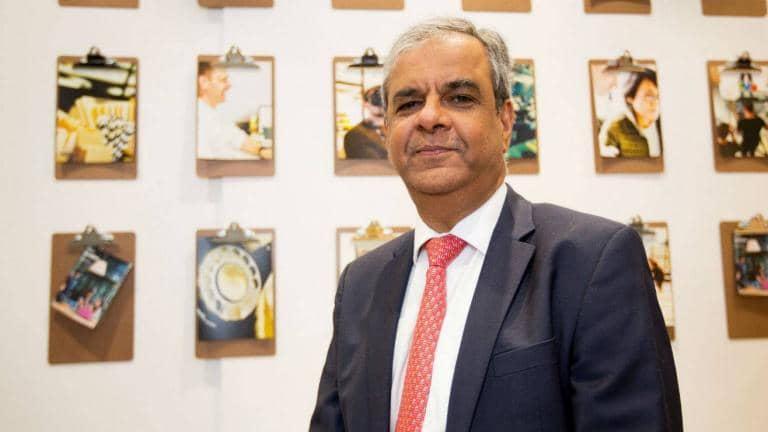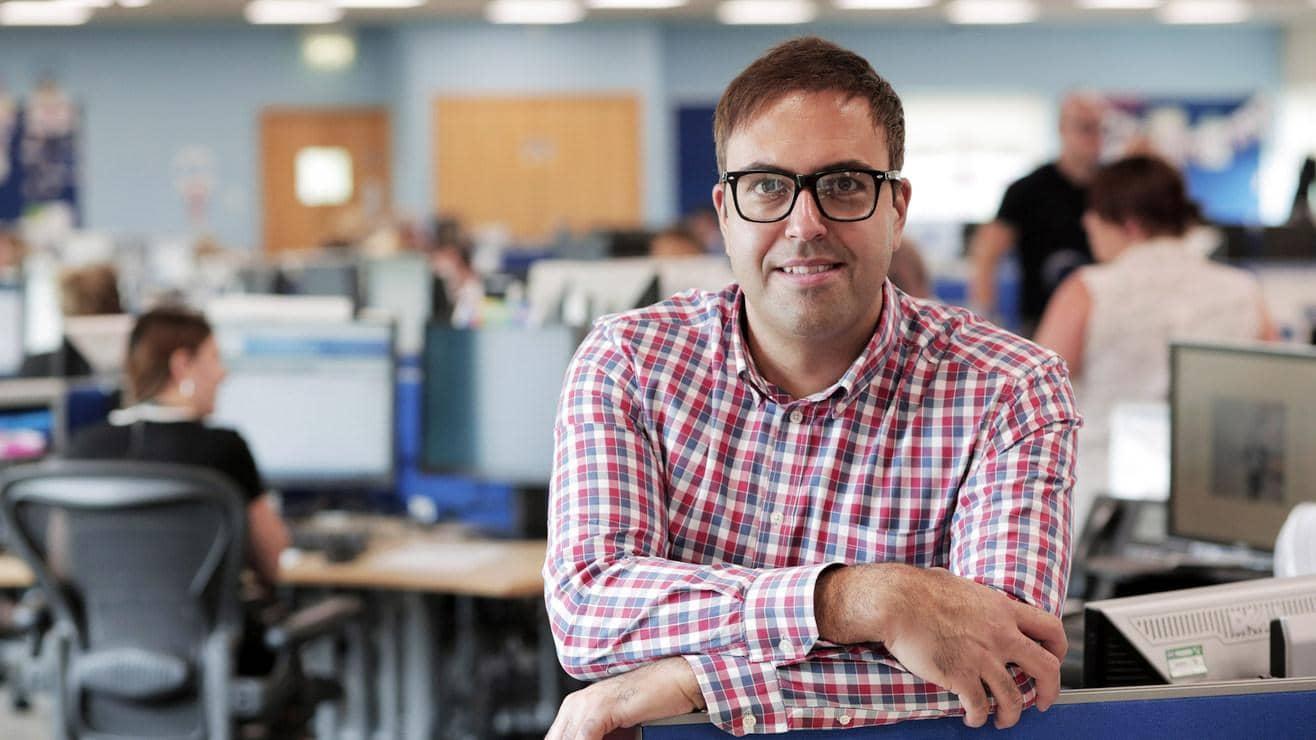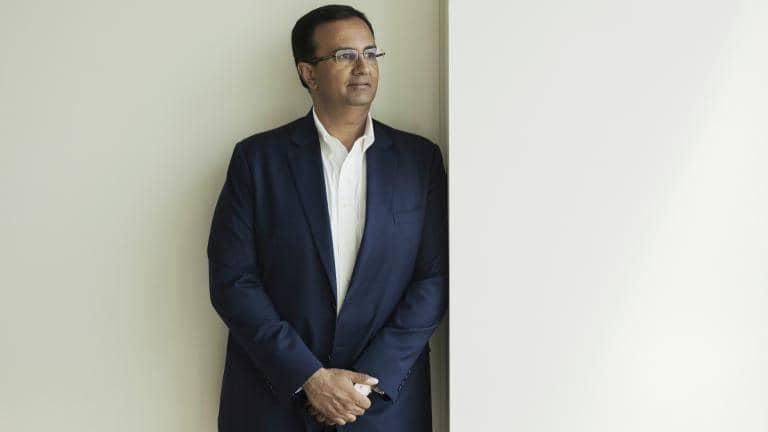
Insights: Ashok Vaswani
“When history is written, 2018 will go down as a seminal year for retail banking,” says Ashok Vaswani, CEO of Barclays UK

Simon Separghan, Barclays MD of Global Customer Operations and Digital Channels, sheds light on how customer expectations are changing in the age of on-demand and “instant gratification” – and why there’s still a vital role for a “human-powered” service.
Customer expectation is changing so rapidly that whatever was the norm yesterday will be different today. And delivering something game-changing today becomes just part of the basic package tomorrow.
Previously, customers were quite happy to reach out to us in traditional telephony and wait a couple of minutes for their enquiries to be answered. Now customers want that in seconds.
And that’s not unique to financial services: with the rise of social media and the proliferation of apps and instant, on-demand services, all of society wants quick gratification, and for any customer-focused firm you have to respond to that to stay relevant.
Of course, that’s a big challenge for any business in any sector. One powerful positive of this is that we have to think and lead much in such a different way – investing in greater empowerment, autonomy and collaboration skills and tools for our colleagues, using technology to make sure our Barclays experts understand a customer’s needs and wants – even before they reach out to us.
Customers, of course, want us to deal with their enquiry, but they also expect us to go one step further and say to them: “We’ve sorted that Mortgage Rate transfer for you, but what I’ve noticed is that you’re doing a lot of transactions outside of the UK. We’ve got this product or service that may be better for you.”
With the rise of social media and the proliferation of apps and on-demand services, all of society wants quick gratification, and we have to respond to that, on our customers’ terms
Sound and vision
Customers also need to fit things in at a time and a place that’s convenient to them, rather than one that’s convenient to us. We were the first European retail bank to launch on-demand video banking (in 2014) and it’s now available to over four million Barclays customers, having thousands of interactions each month.
That’s an incredible revolution for us and our team that created it, because it means that customers can have a face to face discussion as they would do in a branch or with a Relationship Manager, but they can also do that in the comfort of their own home, in an airport lounge, or anywhere in the world – 24/7.
As a team, wherever we are across the globe we are striving to make our customers’ experiences memorable and make sure we can satisfy that with technological improvements, but also with our colleague capabilities.
On the technology front, we’ve invested heavily in areas like voice biometrics and the use of one-time passcodes to provide security to our customers, but balancing that with ensuring our customers have access to all their accounts even when they forget passwords and codes. Voice biometrics allows customers to record their footprint through their vocal chords and use that as a method of identification and verification – as secure as using finger print technology.
A big cause of complaint about many financial services organisations is the inability of customers to get access to their accounts if they don’t have the right identification.
Voice biometrics is such a seamless way of dealing with that and customers have reacted really positively. It also means we can have a more natural conversation, so, at the start of each call, rather than asking the customer a myriad of complex identification questions, we can just ask “how can we help?” and then start really listening to our customers’ needs.
That, in turn, means our conversations are much more empathetic and personal – as you start talking to me, the system is analysing your voice and telling me how I can continue the conversation.
Always on, human-powered banking
Obviously, customers want to be treated as human beings – and that means personalisation has to be much more natural, empathetic – and timing is everything. Technology is going to play an increasingly critical part in that – and so as we continue to invest in AI, machine learning and automation, we have to make sure that we design and deliver from the customers perspective and its right where the customer is when they need us.
We’re doing as much as we can to proactively reach out through things like notifications on the Barclays mobile banking app. And also, when there’s an opportunity to reach out to them in person, that’s powered by a human being – but it could be through a two-way SMS, a live chat or as a Video Call.
The biggest development we’ve seen over the last couple of years is that so much of the transactions have migrated to online and self-service, while we – the humans – tend to deal with longer and more multifaceted interactions. Our colleagues are dealing with more situationally complex things that customers don’t want to deal with online – perhaps where it involves more life events or one-off decisions and some peace of mind. Or – where the process to do it yourself exists, and the value is high – some customers want that confirmation and validation with a human being.
But again, that’s changing all the time. A couple of years ago, around 30 per cent of our calls were from customers who are about to do or have just done something online and want to check with a human that they are going to be pressing the right button – or they’ve done the right thing. That reassurance is very important, and as the offline and online worlds come together more and more there will continue to be a big demand for that.
I’ve grown up in this industry all my life and being on the customer’s side has always been an important driver for me
Keeping the customer delighted
I have the privilege of leading 4,000 colleagues worldwide in so many differing roles, and work with so many internal and external teams to keep pushing our thinking and approach ahead. Over the last few years we’ve invested heavily in building our capability – how to understand when the customer wants us to reach out to them proactively and predictively – in everything from traditional telephony to social media, chat and video banking.
What’s challenging but also exciting is that we’re a part of the business that is truly 24/7, 365 days of the year, and is powered by incredible human beings, so that when branches are closed, when head office shuts its door, we’ve got teams around the clock supporting customers and clients on everything from making a basic money transfer through to reporting fraud on their account or taking out a mortgage with us.
My role is not only to drive the best end to end customer experience, but to make sure that we ultimately provide the best environment for colleagues – from Liverpool to Mumbai – to achieve that success. I’ve grown up in this industry all my life and being on the customer’s side has always been an important driver for me.
I’m lucky enough to be able to prioritise spending my time between our colleagues and our customers across all our locations, and my previous experience of working with such differing roles and sectors with differing cultures really does help me represent the views, thoughts and passions of our 4,000-strong global team.
That sort of engagement also, in the whole, allows us to serve the customer better. How do we know that that? Well our colleague turnover is less than 15% annually. That’s a great endorsement of how our team is meeting the needs of our colleagues – especially when it was 45% when I moved into this role. Customers expect great interactions and great conversations usually flow when we’ve got incredible colleagues getting real purpose and satisfaction from what they are doing – and of course staying with us for longer.

“When history is written, 2018 will go down as a seminal year for retail banking,” says Ashok Vaswani, CEO of Barclays UK

Simon Betteridge is Barclays' Director of Savings Pricing, Proposition and Commercial and tells us why many people aren’t saving enough for their future

Dambisa Moyo is a Zambian-born economist and author who has been a Non-Executive Director with Barclays since 2010

As Head of Omnichannel and Customer Experience at Barclays, Raheel Ahmed heads a team that deals with two billion ‘customer interactions’ every year
